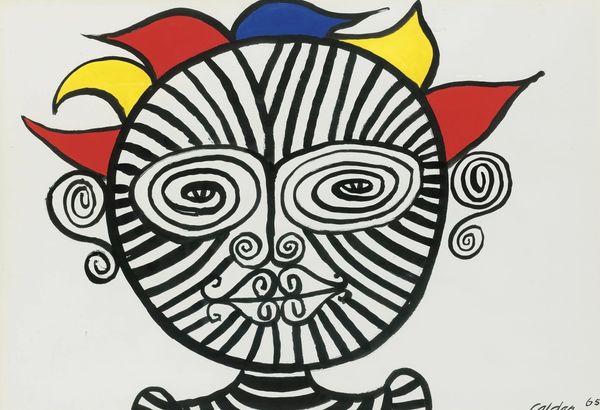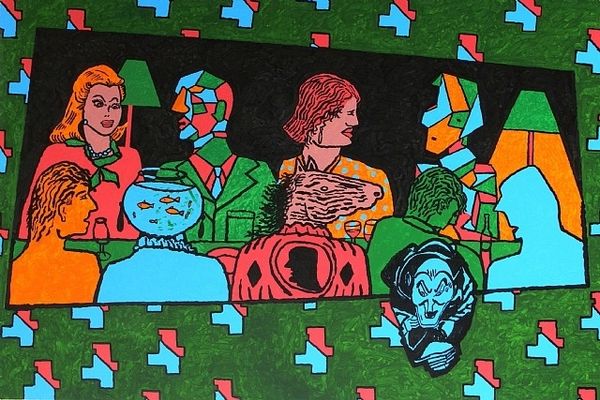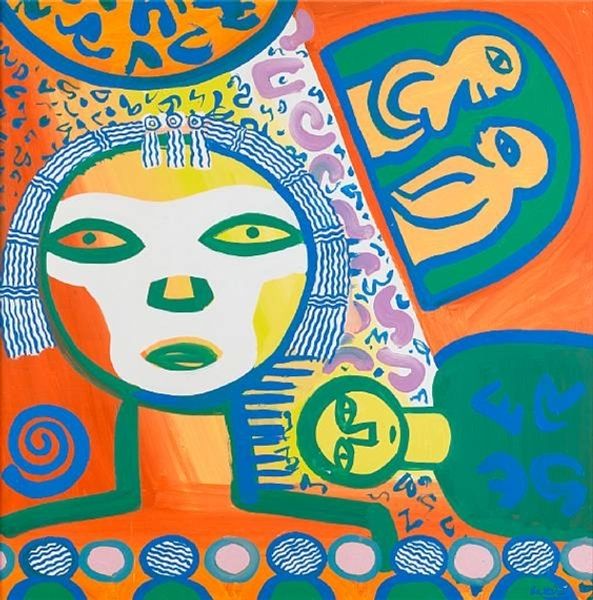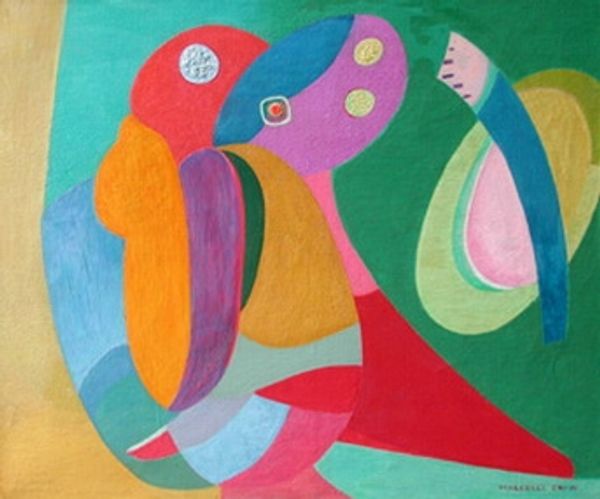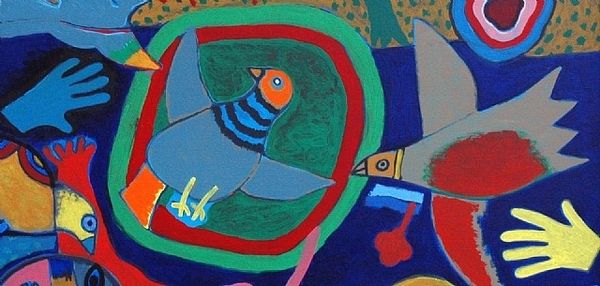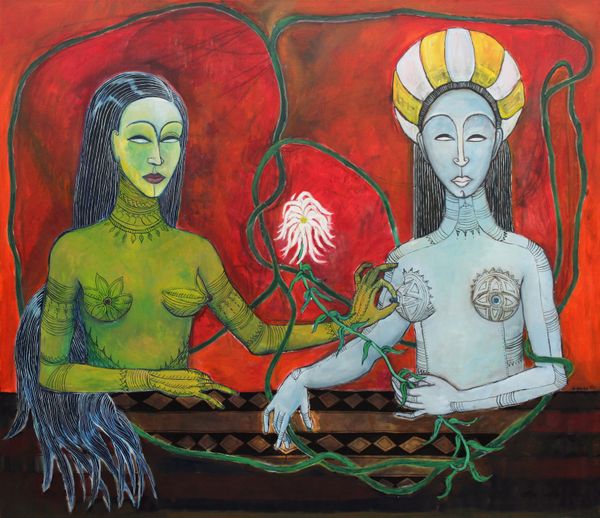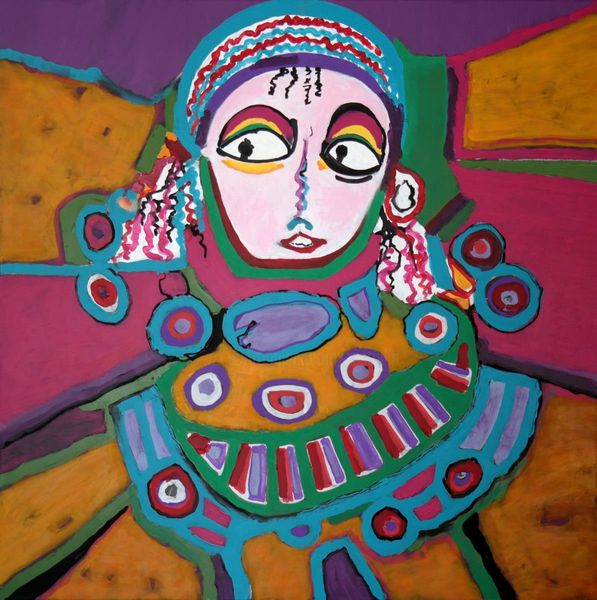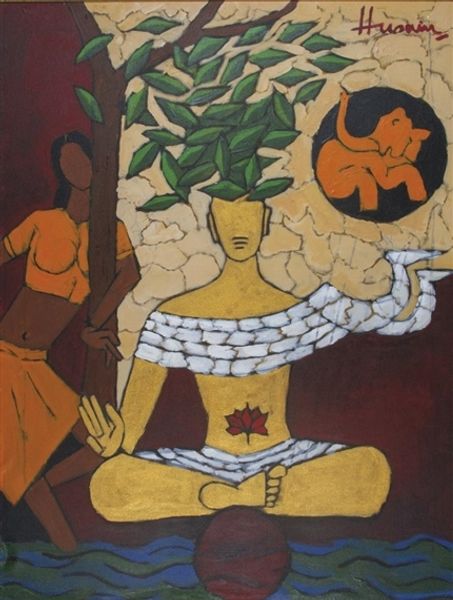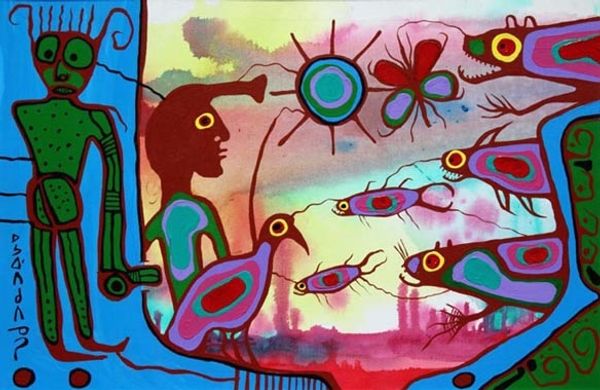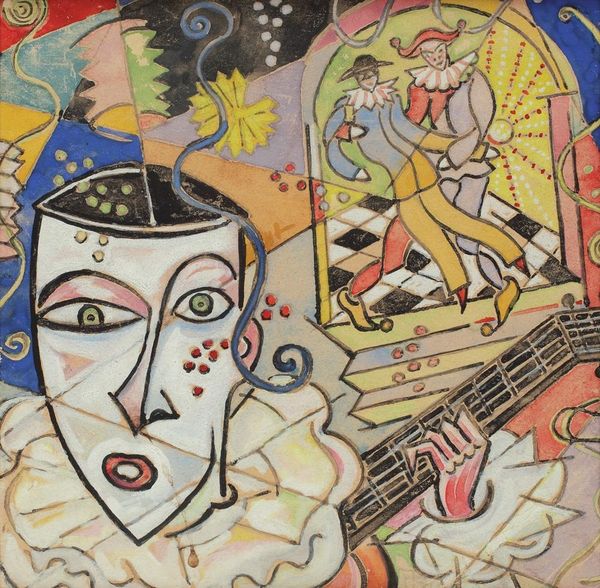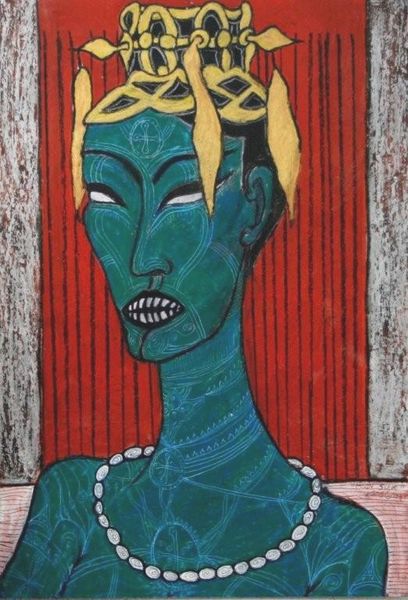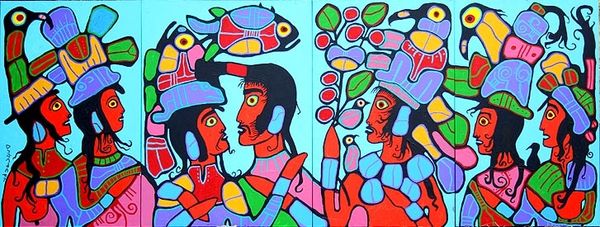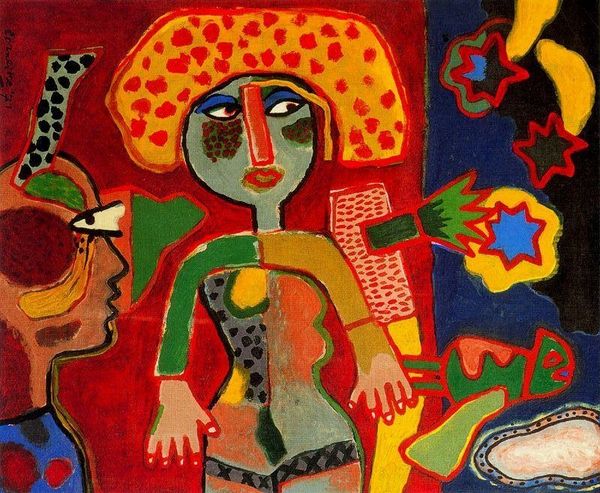
#
cobra
Copyright: Corneille,Fair Use
Editor: This is "Les Amies" by Corneille, painted in 1981, using acrylic paint. It’s quite striking. I'm drawn to the bold colors and graphic style; it almost feels like a contemporary take on Matisse. What compositional elements stand out to you? Curator: Indeed. Notice how Corneille employs vibrant, unmodulated color fields delineated by assertive black outlines. The spatial relationships are flattened, eschewing traditional perspective in favor of a more graphic interplay of forms. The figures themselves are stylized, reduced to essential geometric shapes. The composition uses high contrast and a complementary colour palette to further amplify the tensions at play on the picture plane. What effect does that have, do you think? Editor: It definitely amplifies the impact. The bright green contrasts sharply with the purple, for instance. Also, the use of outlining, it creates a sense of almost stained glass. The simplification is fascinating...it creates an emotional distance somehow. Curator: Precisely. That detachment, that deliberate artifice, redirects our focus away from any attempt at realistic representation and towards the surface itself. Corneille manipulates form and colour for expressive ends. What about the relationships between shapes? Does the overall structure remind you of anything? Editor: Now that you point that out, the figures seem deliberately blocky. It almost resembles abstract forms...It also contributes to that flattened sense you were mentioning before. Are you suggesting it's pure formalism? Curator: Not solely. The representation of the figures obviously hints towards an identifiable content. However, one should also consider how its formal elements—color, line, and composition—become the primary carriers of meaning. How it is built reveals meaning more than who is built. Editor: That's a fascinating way to put it. I guess I was initially too focused on the obvious figurative aspects of the artwork rather than decoding the form first. Thanks for pointing that out. Curator: My pleasure. Exploring the visual structure can unveil layers of meaning one might otherwise miss.
Comments
No comments
Be the first to comment and join the conversation on the ultimate creative platform.
